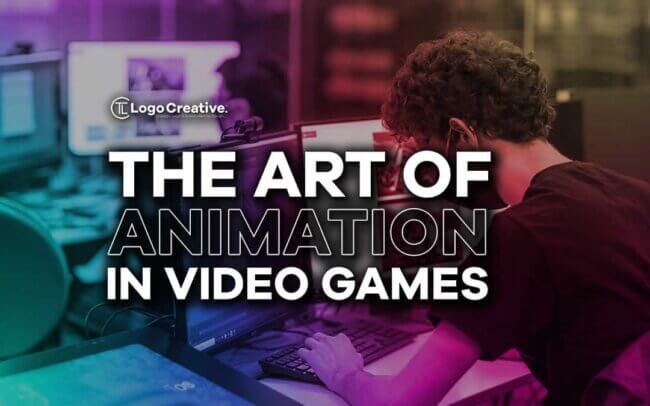Animation is the art of creating the illusion of movement by displaying a series of images in rapid succession. Let’s look at The Art of Animation in Video Games.
In video games, animation is used to create characters, environments, and objects that move realistically. Animation can also be used to create special effects, such as explosions and weather effects.
Game art outsourcing is the practice of hiring an external studio or artist to create the art assets for a video game. This can be a cost-effective way to get high-quality animation, as it allows game developers to tap into the skills and expertise of a wider pool of artists.
Table of Contents
History of Animation in Video Games
The history of animation in video games is a fascinating journey that spans several decades. From the early days of pixel art to the current state of the art in 3D modeling and animation, the evolution of game art and animation has been nothing short of remarkable.
In the 1980s, the era of arcades, games like Donkey Kong had simple animations consisting of a few poses that would switch out for Donkey Kong’s barrel throw and chest thumping. In 1987, The Legend of Zelda pushed the animation further in video games with a few attack animations and some unique enemies to encounter.
In the 1990s, video games like Super Mario 64 took a huge leap forward into the realm of 3D. This meant that the animation also had to take a leap forward, and it certainly did. Gone were the days of a jump animation consisting of a single pose.
As technology advanced, game developers were able to create more complex and realistic animations. Fluid and believable animation needed to be created to help push the complexity of the characters, whether that was with hand-keyed animation or motion-capture. By 2014, the level of character animation that was possible in a game was nearly on par with fully animated feature films.
The evolution of animation in video games has been truly remarkable, and it continues to evolve with new technologies and advancements.
Techniques of Animation in Video Games
There are a number of different techniques that can be used to create animation in video games. Some of the most common techniques include:
- Keyframing: Keyframing is a technique in which animators create a series of key frames, or still images, that represent the start and end of an animation. The frames are then interpolated, or blended together, to create the illusion of movement.
- Motion capture: Motion capture is a technique in which the movements of a real actor are recorded and then used to create an animated character. This technique is often used to create realistic and lifelike movements.
- Blending: Blending is a technique in which animators combine multiple animations to create a smooth transition between them. This technique is often used to create more natural and fluid movements.
- Inverse kinematics: Inverse kinematics is a technique in which animators can control the movement of a character’s limbs by specifying the position of the character’s end effector. This technique is often used to create realistic and dynamic movements.
- Procedural animation: Procedural animation is a technique in which animations are created automatically by a computer program. This technique is often used to create natural movements, such as the movement of water or the wind.
The Importance of Animation in Video Games
Animation is essential for creating realistic and immersive video games. Animation can also be used to tell stories and create engaging gameplay. Without animation, video games would be much less enjoyable.
Animation is used in video games to:
- Create realistic and immersive characters and environments.
- Tell stories and create engaging gameplay.
- Create special effects, such as explosions and weather effects.
- Enhance the overall visual appeal of the game.
The future of animation in video games
The future of animation in video games is bright. As hardware continues to improve, animators will be able to create even more realistic and immersive animations. New animation techniques, such as procedural animation, will also become more widespread.
With the rise of game art outsourcing, it is now possible for game developers to get high-quality animation without having to hire a large in-house team of animators. This is a great way for small and independent game developers to create games that rival those of the big studios.
The Bottom Line
Animation is an essential part of video games. It is used to create realistic and immersive characters and environments, tell stories, and create engaging gameplay.
As hardware continues to improve, animators will be able to create even more realistic and immersive animations. With the rise of game art outsourcing, it is now possible for game developers to get high-quality animation without having to hire a large in-house team of animators.
This is a great way for small and independent game developers to create games that rival those of the big studios.
Further Reading: Check out some 80s & 90s Computer Game Logos.
Join The Logo Community
We hope you enjoyed this article about Effective Strategies for Writing Technical Content That Engages and Educates. If you would like more personal tips, advice, insights, and access to our community threads and other goodies, join me in our community.
You can comment directly on the posts and have a discussion with Andrew, the Founder of The Logo Creative.
*TIP – We recommend Skillshare to learn online. There are tons of classes for everything including graphic design, web design, marketing, branding and business-related courses. Get a free trial with our link and you won’t regret it Trust us!


